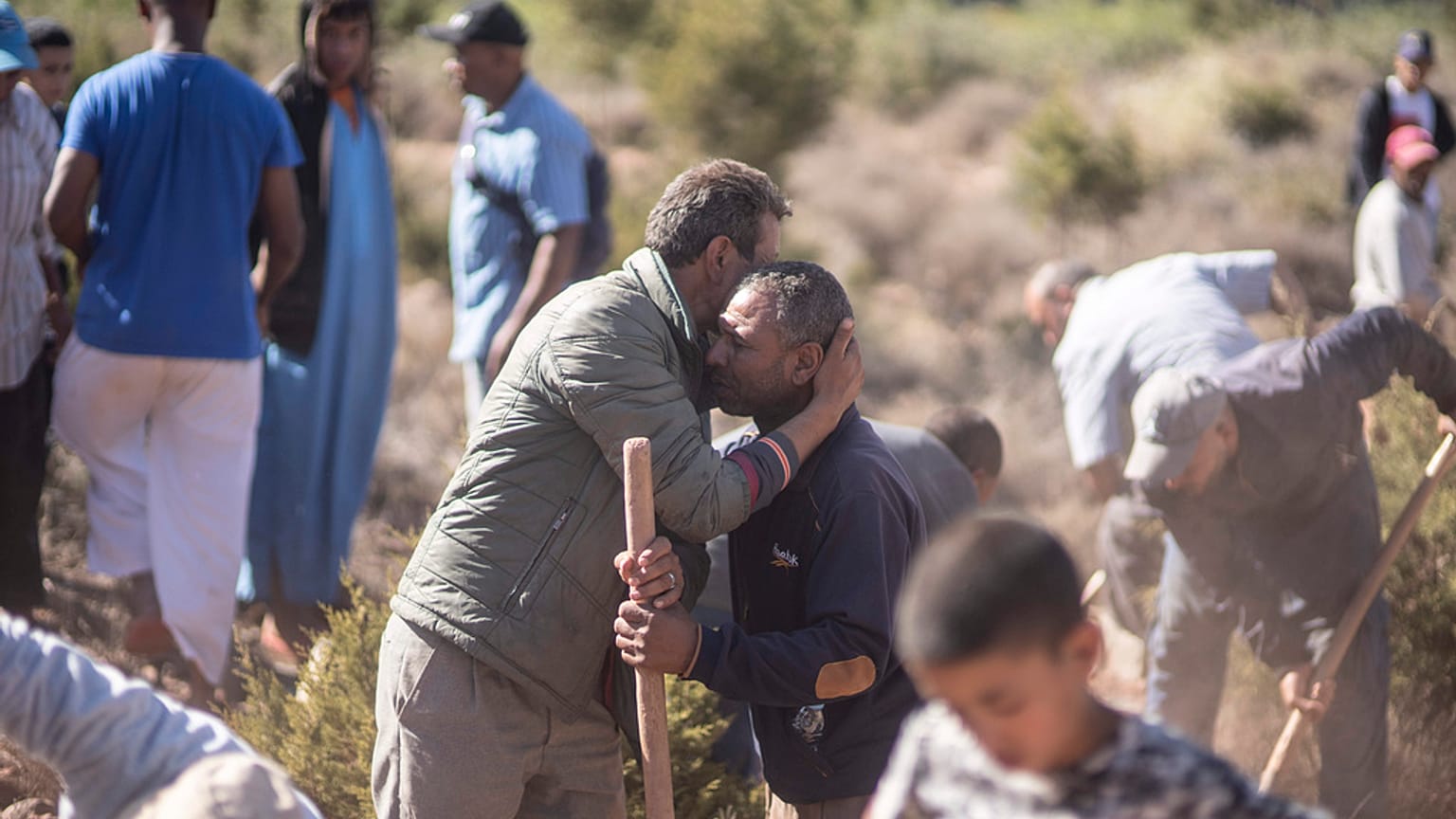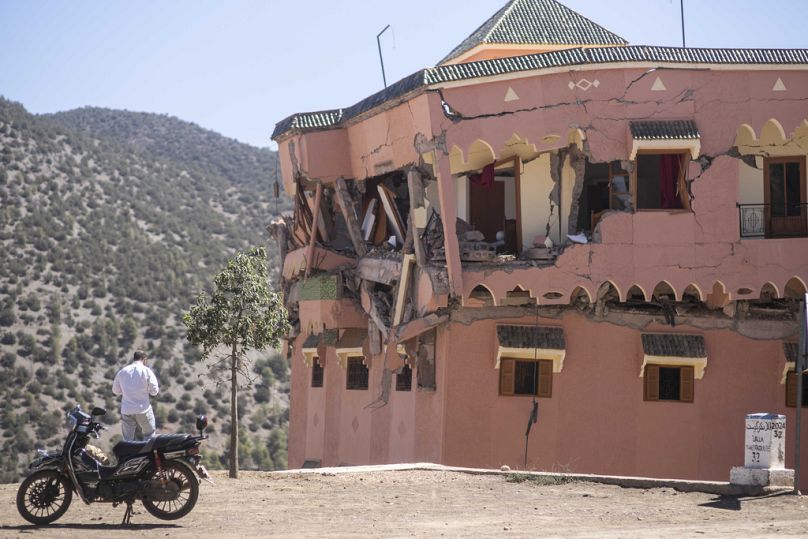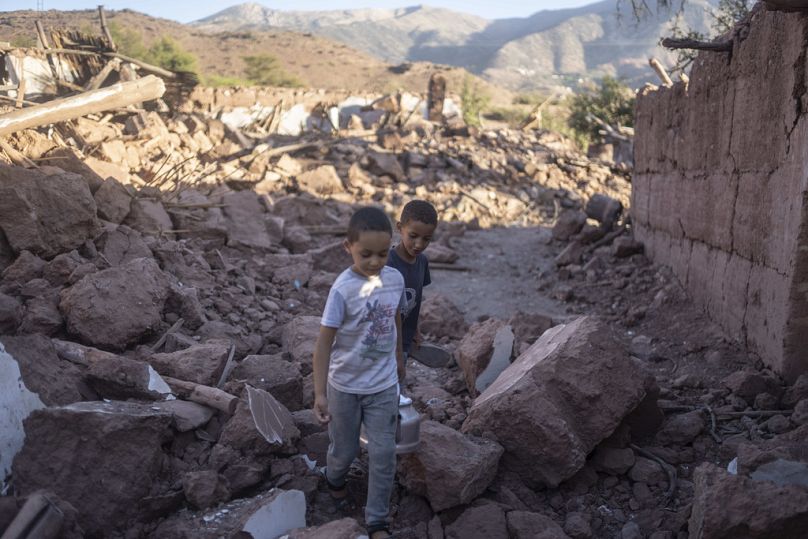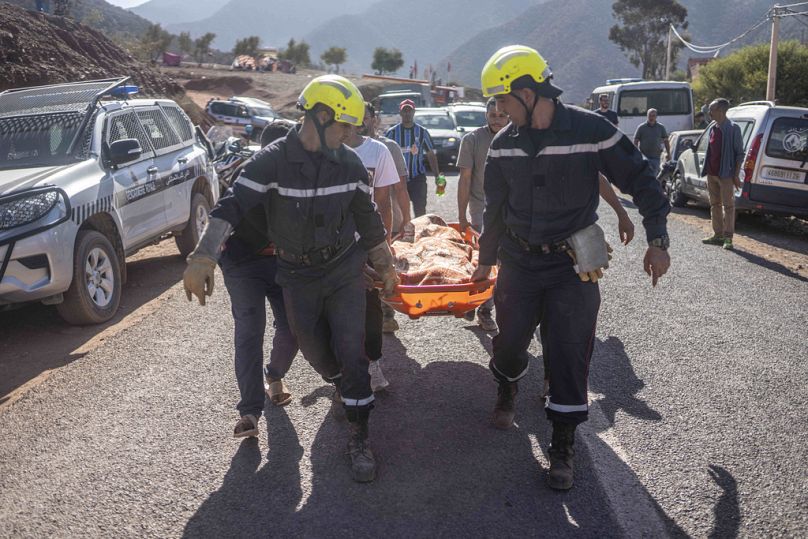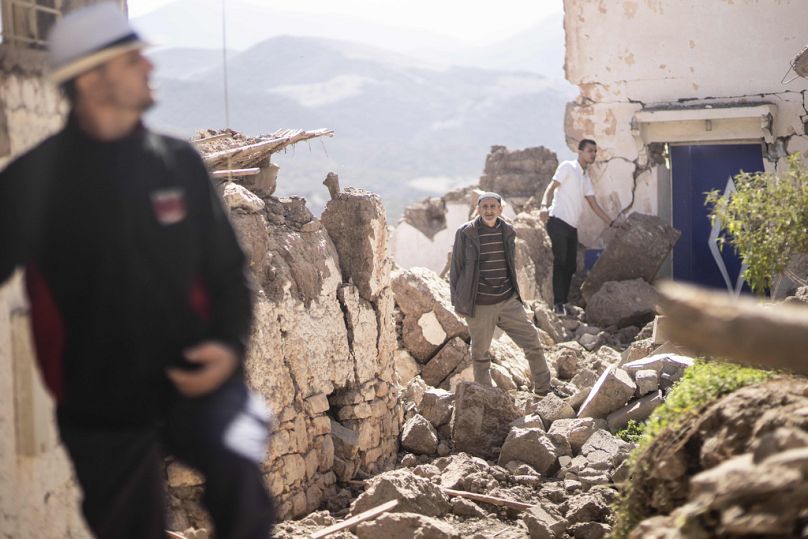A magnitude 3.9 aftershock rattled Moroccans on Sunday as they prayed for victims of the nation’s strongest earthquake in more than a century. More than 2,000 people are dead - a number that is expected to rise.
The United Nations estimated that 300,000 people were affected by Friday night's magnitude 6.8 quake and some Moroccans complained on social networks that the government wasn’t allowing more help from outside. International aid crews were prepared to deploy but remained in limbo waiting for the Moroccan government to request their assistance.
“We know there is a great urgency to save people and dig under the remains of buildings,” said Arnaud Fraisse, founder of Rescuers Without Borders, who had a team stuck in Paris waiting for the green light. “There are people dying under the rubble, and we cannot do anything to save them.”
Those left homeless - or fearing more aftershocks - from Friday night’s earthquake slept outside Saturday, in the streets of the ancient city of Marrakech or under makeshift canopies in Atlas Mountain towns like Moulay Brahim, among the hardest-hit. The worst destruction was in small, rural communities that are hard for rescuers to reach because of the mountainous terrain.
Those same areas were shaken anew Sunday by a magnitude 3.9 quake, according to the US Geological Survey. It wasn't immediately clear if the temblor caused more damage or casualties, but it was likely strong enough to rattle nerves in areas where damage has left buildings unstable and people have spoken of their fears of aftershocks.
The earthquake on Friday toppled buildings not built to withstand such a mighty quake, trapping people in the rubble and sending others fleeing in terror. A total of 2,012 people were confirmed dead and at least 2,059 more people were injured - 1,404 of them critically - Morocco’s Interior Ministry reported Saturday night.
“We felt a huge shake like it was doomsday,” Moulay Brahim resident Ayoub Toudite said. “Ten seconds and everything was gone.”
Flags were lowered across Morocco, as King Mohammed VI ordered three days of national mourning starting Sunday. The army mobilized specialized search and rescue teams, and the king ordered water, food rations and shelter to be provided to those who lost their homes.
The king called for mosques across the kingdom to hold prayers Sunday for the victims, many of whom were buried Saturday amid the frenzy of rescue work nearby.
Aid offers have poured in from around the world and the U.N. said it had a team in Morocco coordinating with authorities about how international partners can provide support. About 100 teams made up of a total of 3,500 rescuers from around the world are registered with a UN platform and ready to deploy in Morocco when asked, Rescuers Without Borders said.
In a sign that Morocco may be prepared to accept more help from outside, the Spanish military said it had sent an air force plane carrying an urban search and rescue team of 56 soldiers and four dogs to Marrakech to help. Foreign Minister José Manuel Albares said in a radio interview that the deployment was in response to a bilateral request for help from Moroccan authorities. Another rescue team from Nice, France, also was on its way.
In France, home to many people with links to Morocco, towns and cities have offered more than 2 million euros in aid, and popular performers are rallying to collect donations. The Moroccan king ordered the opening of special bank accounts to allow donations to help those in need.
The epicentre of Friday’s quake was near the town of Ighil in Al Haouz Province, roughly 70 kilometres south of Marrakech. Al Haouz is known for scenic villages and valleys tucked in the High Atlas Mountains.
About 45 kilometres northeast of the quake epicentre, fallen walls exposed the innards of damaged homes, and piles of rubble blocked alleys. In Moulay Brahim, a poor rural community of less than 3,000 people, many of the homes made of clay brick and cinder block were no longer safe or no longer standing.
Devastation gripped each town along the High Atlas’ steep and winding switchbacks, with homes folding in on themselves and people crying as boys and helmet-clad police carried the dead through the streets.
”I was asleep when the earthquake struck. I could not escape because the roof fell on me. I was trapped. I was saved by my neighbours who cleared the rubble with their bare hands," said Fatna Bechar in Moulay Brahim. “Now, I am living with them in their house because mine was completely destroyed.”
Hamid Idsalah, a 72-year-old mountain guide, said he and many others remained alive, but had little future to look forward to as they lack the financial means to rebound.
Some Marrakech shop owners returned to work Sunday morning after the king encouraged economic activities to resume nationwide and ordered plans to begin to reconstruct destroyed buildings.
For much of Saturday in historic Marrakech, people could be seen on state television clustering in the streets, afraid to go back inside buildings that might still be unstable.
The city's famous Koutoubia Mosque, built in the 12th century, was damaged, but the extent was not immediately clear. The famous red walls that surround the old city, a UNESCO World Heritage site, were also damaged.
Police, emergency vehicles and people fleeing in shared taxis spent hours traversing unpaved roads through the High Atlas in stop-and-go traffic, often exiting their cars to help clear giant boulders from routes known to be rugged and difficult even before the earthquake.
“It felt like a bomb went off,” 34-year-old Mohamed Messi said.
The quake had a preliminary magnitude of 6.8 when it hit at 11:11 p.m., with shaking that lasted several seconds, the USGS said. The agency added that a magnitude 4.9 aftershock hit 19 minutes later. The collision of the African and Eurasian tectonic plates occurred at a relatively shallow depth, which makes a quake more dangerous.
It was the strongest earthquake in terms of magnitude to hit the North African country in more than 120 years, according to the USGS, which has records dating back to 1900.
But in 1960, a magnitude 5.8 temblor struck near the Moroccan city of Agadir and caused thousands of deaths. That quake prompted changes in construction rules in Morocco, but many buildings, especially rural homes, are not built to withstand such tremors.
In 2004, a magnitude 6.4 earthquake near the Mediterranean coastal city of Al Hoceima left more than 600 dead.
Friday's quake was felt as far away as Portugal and Algeria, according to the Portuguese Institute for Sea and Atmosphere and Algeria's Civil Defense agency, which oversees emergency response.















